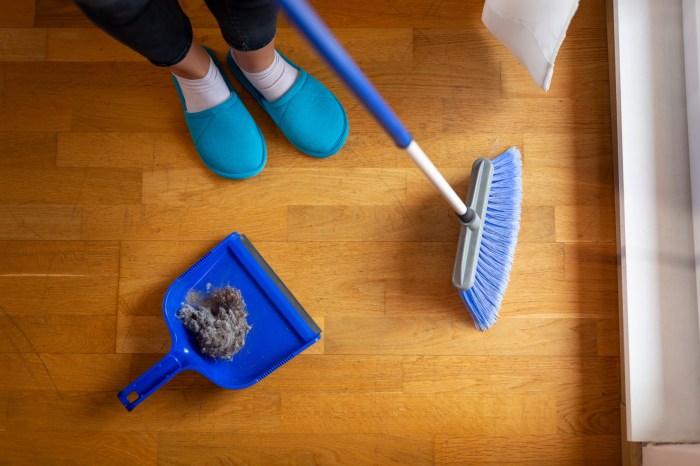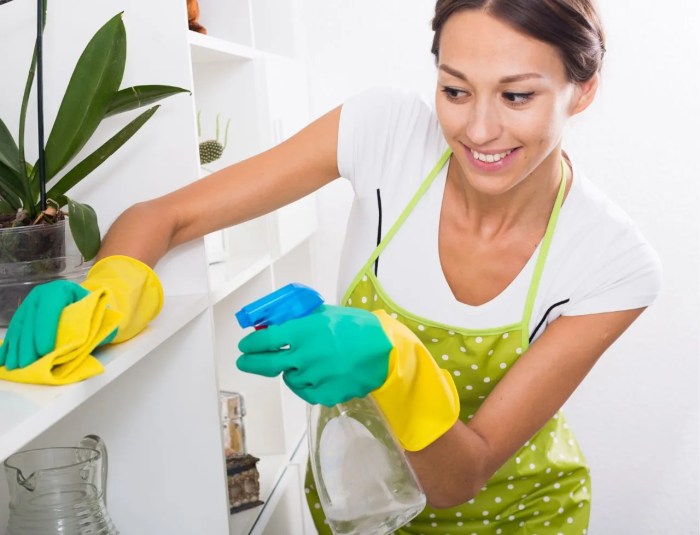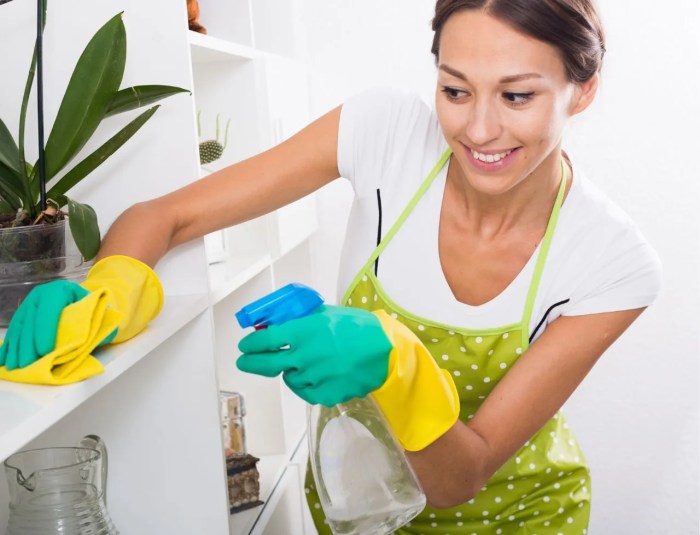Cleaning hard to reach spots is a crucial aspect of thorough cleaning, often overlooked. This comprehensive guide delves into the challenges and solutions for tackling those hard-to-reach areas in various environments, from kitchens and bathrooms to cars. We’ll explore effective strategies, highlight specialized tools, and discuss the best cleaning solutions for optimal results.
From stubborn grime in tight corners to dusty nooks and crannies, we’ll examine how to conquer these cleaning conundrums. Discover the perfect tools, techniques, and cleaning agents to make cleaning hard-to-reach spots a breeze. Whether you’re a seasoned cleaning enthusiast or a beginner looking to improve your cleaning skills, this guide will equip you with the knowledge and tools to tackle any cleaning challenge.
Introduction to Hard-to-Reach Cleaning: Cleaning Hard To Reach Spots

Cleaning hard-to-reach areas presents unique challenges, demanding specialized tools and techniques to ensure thoroughness and hygiene. These areas often accumulate dirt, grime, and bacteria more readily than easily accessible surfaces, posing health risks and compromising the overall aesthetic appeal of a space. Effective cleaning strategies for hard-to-reach spots are crucial for maintaining a clean and healthy environment in kitchens, bathrooms, cars, and other areas.Effective cleaning strategies for hard-to-reach areas are essential for maintaining a healthy and aesthetically pleasing environment.
Cleaning those hard-to-reach spots can be a real pain, especially when sticky messes like tomato sauce get involved. Knowing how to tackle these stubborn stains is key, and luckily, there are some fantastic tips for removing them. For a detailed guide on effectively removing tomato sauce stains, check out this helpful resource: how to remove tomato sauce stains.
Once you’ve got the sauce situation under control, you can tackle those other hard-to-reach spots with confidence!
This includes not just removing visible dirt but also addressing hidden contaminants that contribute to the build-up of bacteria and allergens. The specific cleaning methods and tools depend heavily on the material and location of the hard-to-reach area.
Common Hard-to-Reach Spots
Various locations present unique cleaning challenges. Kitchens, with their array of appliances and crevices, are prime examples. Difficult-to-clean areas include behind ovens, inside microwaves, and in the spaces between cabinets. Bathrooms, with their fixtures and grout lines, present similar challenges. Hidden areas behind toilets, under sinks, and in shower stalls require specialized cleaning approaches.
In automobiles, hard-to-reach spots include under seats, in crevices of dashboards, and in air vents. The precise cleaning method depends on the specific material and location.
Tackling those hard-to-reach spots can be a real pain, but sometimes the trickiest areas are surprisingly simple to clean. For example, when it comes to your yoga mat, proper cleaning is crucial to maintain hygiene and prevent bacteria buildup. Check out this guide on how to clean a yoga mat for some great tips, and you’ll be amazed at how easy it is to tackle those stubborn spots on your mat, and other hard-to-reach areas around your home.
It’s all about the right tools and technique!
Cleaning Methods for Hard-to-Reach Areas
A variety of cleaning methods and tools are available for tackling hard-to-reach spots. Each method has its own strengths and weaknesses, and the most effective choice depends on the specific area and material.
| Method | Tools | Techniques | Effectiveness |
|---|---|---|---|
| Using a Cleaning Brush with Narrow Head | Specialized cleaning brushes with narrow heads, or a toothbrush | Applying cleaning solution to the brush and carefully maneuvering it into the hard-to-reach area. Using a small amount of elbow grease to work out stubborn grime. | High effectiveness for tight spaces and small crevices. |
| Employing a Telescoping Cleaning Wand | Telescoping cleaning wands with various attachments (e.g., brushes, scrubbers) | Using the wand to extend reach and apply cleaning solutions to hard-to-reach places. | Excellent for cleaning hard-to-reach places like under sinks or behind appliances. |
| Utilizing Specialized Cleaning Sprays | Cleaning sprays specifically designed for hard-to-reach areas | Applying the spray to the target area and allowing it to sit for a period to loosen dirt. Then, use a cloth or brush to wipe away the residue. | Effective for loosening dirt and grime before more intensive cleaning methods are applied. |
| Using a Vacuum with a Narrow Nozzle | Vacuum with a narrow nozzle attachment | Use the vacuum to remove dust and debris from hard-to-reach areas like air vents and crevices. | Effective for removing loose dirt, dust, and debris. |
Tools and Equipment for Cleaning

Reaching those hard-to-reach spots requires specialized tools. Choosing the right tool can significantly improve cleaning efficiency and prevent damage to surfaces. This section explores various cleaning tools, their effective use, and important considerations for maintenance.Understanding the specific needs of each cleaning task is crucial. For instance, stubborn grime on a high shelf demands different tools than a delicate stain on a porcelain doll.
Knowing the material being cleaned, the type of dirt, and the accessibility of the area are all important factors in selecting the right tools.
Specialized Cleaning Tools
Various tools are designed for cleaning hard-to-reach areas. These tools range from simple to complex, each with its own strengths and weaknesses. Consider the specific cleaning challenge before selecting a tool. For example, a long-handled brush is ideal for cleaning high shelves, while a specialized nozzle attachment is better for tight spaces.
Different Brush Types, Cleaning hard to reach spots
Choosing the right brush is critical for effective cleaning. The material and shape of the brush directly impact its ability to remove dirt without causing damage. Different brush types excel in different situations.
| Brush Type | Application | Features |
|---|---|---|
| Soft-bristled Nylon Brush | Cleaning delicate surfaces like antiques, paintings, and electronics | Gentle bristles prevent scratching; ideal for sensitive materials |
| Stiff-bristled Wire Brush | Removing stubborn dirt and grime from metal surfaces, grout, and concrete | Durable bristles effectively remove heavy deposits |
| Microfiber Cleaning Brush | Cleaning delicate surfaces like glass, mirrors, and fine furniture | Extremely soft bristles prevent scratching; excellent for picking up dust and debris |
| Long-handled Cleaning Brush | Cleaning high shelves, ceiling fans, and other hard-to-reach areas | Extended handle allows for reaching higher areas without strain; suitable for various surfaces |
| Scrubbing Brush | Removing tough stains from floors, tubs, and sinks | Thick, durable bristles effectively loosen dirt and grime |
Using Tools Effectively and Safely
Proper tool usage is essential to achieve optimal cleaning results. Always follow the manufacturer’s instructions and consider the specific surface being cleaned. For example, a stiff brush should never be used on delicate surfaces, as it might scratch or damage them. Always use the appropriate cleaning solution and technique for each surface.
Tool Maintenance and Storage
Regular maintenance and proper storage are crucial for extending the lifespan of cleaning tools. Clean tools thoroughly after each use to prevent dirt buildup. Store tools in a dry, clean area to avoid rust or damage. Using tool covers or protective cases will prevent damage to the tools, especially in humid or dusty environments. Properly storing and maintaining tools saves time and money in the long run.
For example, a regularly cleaned and stored brush will last much longer and perform better than a neglected one.
Cleaning those hard-to-reach spots in your kitchen can be a real pain, but it’s crucial for hygiene. One key aspect is paying attention to the tools you use in the kitchen, as some are best hand-washed. For example, things like whisks, spatulas, and those tiny little tongs that you use for picking up the peas from the plate are perfect candidates for hand washing, as detailed in this helpful guide on kitchens tools you should always hand wash.
Properly cleaning these tools helps maintain a spotless kitchen and prevents the spread of germs, which ultimately makes cleaning those hard-to-reach spots easier in the long run.
Cleaning Solutions and Products
Choosing the right cleaning solution is crucial for effective and safe hard-to-reach cleaning. Different surfaces react differently to various chemicals, and using the wrong product can damage the surface or compromise your health. Understanding the properties and applications of cleaning agents is key to achieving a thorough and successful clean without compromising the integrity of the surfaces or materials being cleaned.Understanding the chemistry behind cleaning solutions helps us select the most appropriate products for different surfaces.
This involves knowing the active ingredients, their effectiveness against specific stains and grime, and the safety precautions required for safe use. Effective cleaning solutions should effectively remove dirt and grime without harming the surfaces or materials being cleaned.
Effective Cleaning Solutions for Hard-to-Reach Areas
Cleaning solutions for hard-to-reach areas need to be effective, safe, and easy to apply. A variety of solutions can be used, from simple household solutions to specialized cleaning products. Careful consideration of the surface being cleaned and the type of dirt or grime present is essential.
Properties and Applications of Cleaning Agents
Various cleaning agents exhibit unique properties that influence their effectiveness and suitability for different applications. Understanding these properties is essential for selecting the right product for the task at hand. For instance, acidic solutions are effective against mineral deposits, while alkaline solutions are better suited for grease and oil. Consideration of the specific surface and the type of contaminant is critical to ensure the best possible cleaning outcome.
Comparing the Effectiveness and Safety of Different Cleaning Products
When comparing cleaning products, consider their effectiveness in removing dirt and grime, as well as their safety for the surfaces being cleaned and the user. Some products are more aggressive than others, potentially damaging delicate surfaces or posing health risks. Thorough research and careful consideration are essential to avoid negative consequences.
Tips for Selecting the Right Cleaning Solution for Different Surfaces
Choosing the correct cleaning solution for a specific surface is crucial to prevent damage and ensure optimal results. Different materials react differently to various cleaning agents, and selecting the wrong solution can lead to undesirable outcomes. For example, using abrasive cleaners on delicate surfaces like marble or granite can cause scratches.
Table of Common Cleaning Solutions and Suitability for Various Surfaces
| Solution | Surface Type | Suitability |
|---|---|---|
| Distilled White Vinegar | Glass, Ceramic, Stainless Steel | Excellent |
| Baking Soda Paste | Ceramic Tiles, Grout | Good |
| Isopropyl Alcohol | Plastic, Metal, Glass | Good |
| Specialized Glass Cleaners | Glass, Mirrors | Excellent |
| Ammonia | Wood, Metal | Caution, use with ventilation |
| Bleach | Porcelain, Enamel | Good (diluted), use with caution |
Last Word
In conclusion, conquering those hard-to-reach spots requires a multifaceted approach. Knowing the right tools, techniques, and cleaning solutions is key to achieving optimal results. This guide has provided a roadmap to effective cleaning, enabling you to tackle any cleaning challenge with confidence. Remember to prioritize safety and choose products suitable for the surfaces you’re cleaning. Happy cleaning!






